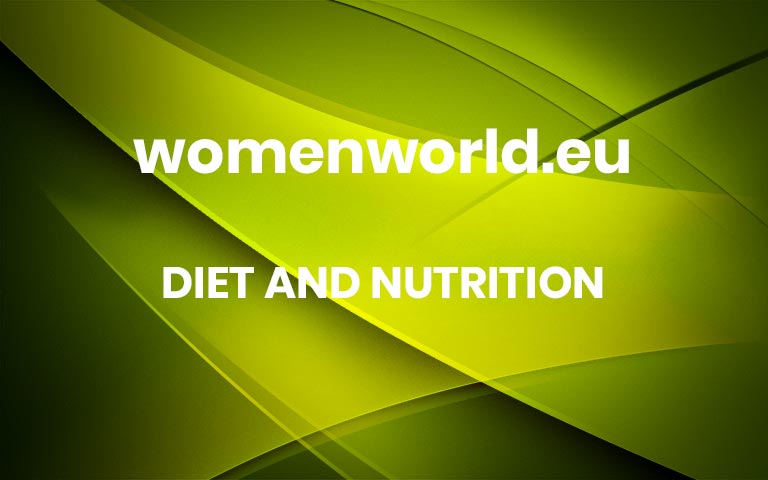Struggling with symptoms like diarrhoea, bloating, and gas isn’t exactly a recipe for a good time. And, if it goes on long enough, you’ll probably do a little online detective work to try to figure out what’s causing your issues and how you can clear them up ASAP. You may stumble across mentions of a low-FODMAP diet.
FODMAP is an acronym that stands for fermentable oligosaccharides, disaccharides, monosaccharides, and polyols. It’s a fancy medical way of saying that foods that fall into this category can mess with your stomach and GI tract, explains Dr. Lea Ann Chen, an assistant professor of medicine in the division of gastroenterology and hepatology at Rutgers Robert Wood Johnson Medical School. A low-FODMAP diet encourages you to weed out certain foods that tend to produce gas – and then slowly reintroduce them to see what’s the most problematic.
READ MORE: Is Eating A Vegan Keto Diet Even Possible? Here’s Everything You Need To Know
A low-FODMAP diet usually isn’t a long-term thing. But, Dr. Chen says, “it really depends on why you’re on it. It’s driven by symptoms. If you’re on a low-FODMAP diet and it doesn’t help you, there’s no reason to be on it indefinitely.” Other people may find that the diet helps with symptoms as they’re working through an illness or trying to identify food sensitivities, she says. And some people, like those with irritable bowel syndrome (IBS) and small intestinal bacterial overgrowth (SIBO), find that a low-FODMAP diet combined with medication is the most effective treatment over the long run. “The trade-off is how much it helps you and if you think it’s worth it,” Dr. Chen says.
If you’re interested in trying a low-FODMAP diet, Dr. Richa Shukla, an assistant professor of medicine and gastroenterology at Baylor College of Medicine, offers this advice: “Don’t be overly restrictive.” She recommends doing a trial run for a few weeks and seeing how you feel. “If it’s not making a difference, it’s time to reevaluate things,” she says. Because it can be tricky to navigate on your own, your best and safest bet is to work with a registered dietitian or gastroenterologist to do a low-FODMAP diet.
Want to see if a low-FODMAP diet will help with your gut issues? Here’s what you need to know about the ins and outs of this eating plan.
How does the low-FODMAP diet work?
The low-FODMAP diet is an elimination diet, and there are three phases to it. You start by cutting out high-FODMAP foods for several weeks to allow your gut time to neutralize, Dr. Shukla says. During this phase, you should start to notice some improvement in your symptoms.
After that, you’ll start to slowly re-introduce those foods back into your diet. You may discover that certain high-FODMAP foods give you issues, while others don’t—or you may learn that all of them are a problem for you, Dr. Chen says.
Finally, you’ll work on maintaining the right diet. This means steering clear of your triggers and focusing on the foods that don’t aggravate your issues.
READ MORE: 10 Signs You May Have a Magnesium Deficiency
What are the best low-FODMAP foods?
There’s a whole range of foods that are considered low FODMAP, and it’s hard to know for sure what is best for each person, says Kathy LeBarre, a dietitian at Spectrum Health. “During the restrictive phase, we may find that some foods are better than others,” she adds. Here are a few examples of foods that fall into the low-FODMAP category:
Avocado
Bananas
Blueberries
Olives
Oranges
Brown sugar
Maple syrup
Almond milk
Arugula
Bell peppers
Carrots
Eggplant
Lettuce
Brown rice
Oats
Almonds
Peanuts
Beef
Chicken
Eggs
READ MORE: How To Go Vegan: 15 Easy Nutritionist-Backed Tips
Eating a low-FODMAP diet doesn’t necessarily mean that you need to be all low FODMAP, all the time, but it can help. “For the most part, it would be ideal to stick to a low-FODMAP diet, but there is some wiggle room to incorporate a serving of a moderate FODMAP at a meal,” says Laura Manning, a clinical nutrition coordinator at the Susan and Leonard Feinstein IBD Clinical Centre at Mount Sinai.
What are high-FODMAP foods?
What may be a bad high-FODMAP food for you could cause zero issues in the next person. In general, though, “high-FODMAP foods contain short-chain carbohydrates that are rapidly fermented in the digestive process and poorly absorbed,” Manning explains. “They can cause digestive upset such as gas, bloating, and diarrhea when consumed.” A few examples of high-FODMAP foods to avoid include the following:
Apples
Cherries
Pears
Grapefruit
Barley
Farro
Wheat
Milk
Cream
Ice cream
Soft cheeses yogurt
Soy milk
Chickpeas
Lima beans
Agave
Honey
Artichokes
Beets
Brussels sprouts
Cauliflower
Mushrooms
Peas
READ MORE: 9 Cauliflower Benefits That Make It A Superfood, According To A Dietitian
What does a low-FODMAP diet plan look like?
It depends on what phase of the diet you’re in, according to Keri Gans, the author of The Small Change Diet. This means you’re going to be a little more restrictive in the elimination portion of the diet vs. when you’re reintroducing some foods.
Below are some sample meal plans you can follow when you’re on a low-FODMAP diet:
Day One
Breakfast: Cooked oatmeal with peanut butter, a drizzle of maple syrup, and one cup of strawberries
Lunch: Grilled chicken with herbs over arugula salad with cucumbers, bell peppers, cherry tomatoes with lemon Dijon dressing and a gluten-free roll
Snack: Lactose-free yogurt and raspberries
Dinner: Baked salmon with dill, brown rice, and sautéed spinach with olive oil
Day Two
Breakfast: Avocado toast on sourdough bread topped with two poached eggs
Lunch: Quinoa bowl filled with chicken, pumpkin, carrots, and kale
Snack: A handful of olives
Dinner: Pasta tossed with shrimp, sautéed spinach, olive oil, salt, and ground pepper
Day Three
Breakfast: Scrambled eggs with a side of berries
Lunch: Chicken sandwich with lettuce on sourdough bread and a side of baby carrots
Snack: A handful of almonds
Dinner: Steak with a side of sautéed carrots and green beans
READ MORE: Caffeine Effects: “What Happens When I Go Hard on Coffee?”
Overall, a low-FODMAP diet is “considered to be safe and healthy” when you do it right, Manning says. But, she adds that “it is important to ensure that the diet is adequate in fibre, protein, calcium, and certain B vitamins” because deficiencies can happen if the food variety is limited or the diet is followed for a longer period of time than suggested.
If you’re planning to do a low-FODMAP diet beyond what was prescribed, it’s a good idea to check in with your doctor or a registered dietitian, just to make sure you’re covering all your bases.
The bottom line: The low-FODMAP diet is meant to be used as a short-term eating plan to identify food triggers that worsen your GI symptoms or condition. If you plan on following it for a longer period of time, be sure to talk to a doctor or nutritionist.
*This article was originally published on Women’s Health US
READ MORE ON: Diet Advice FODMAP Diet Nutrition Nutrition Advice More




